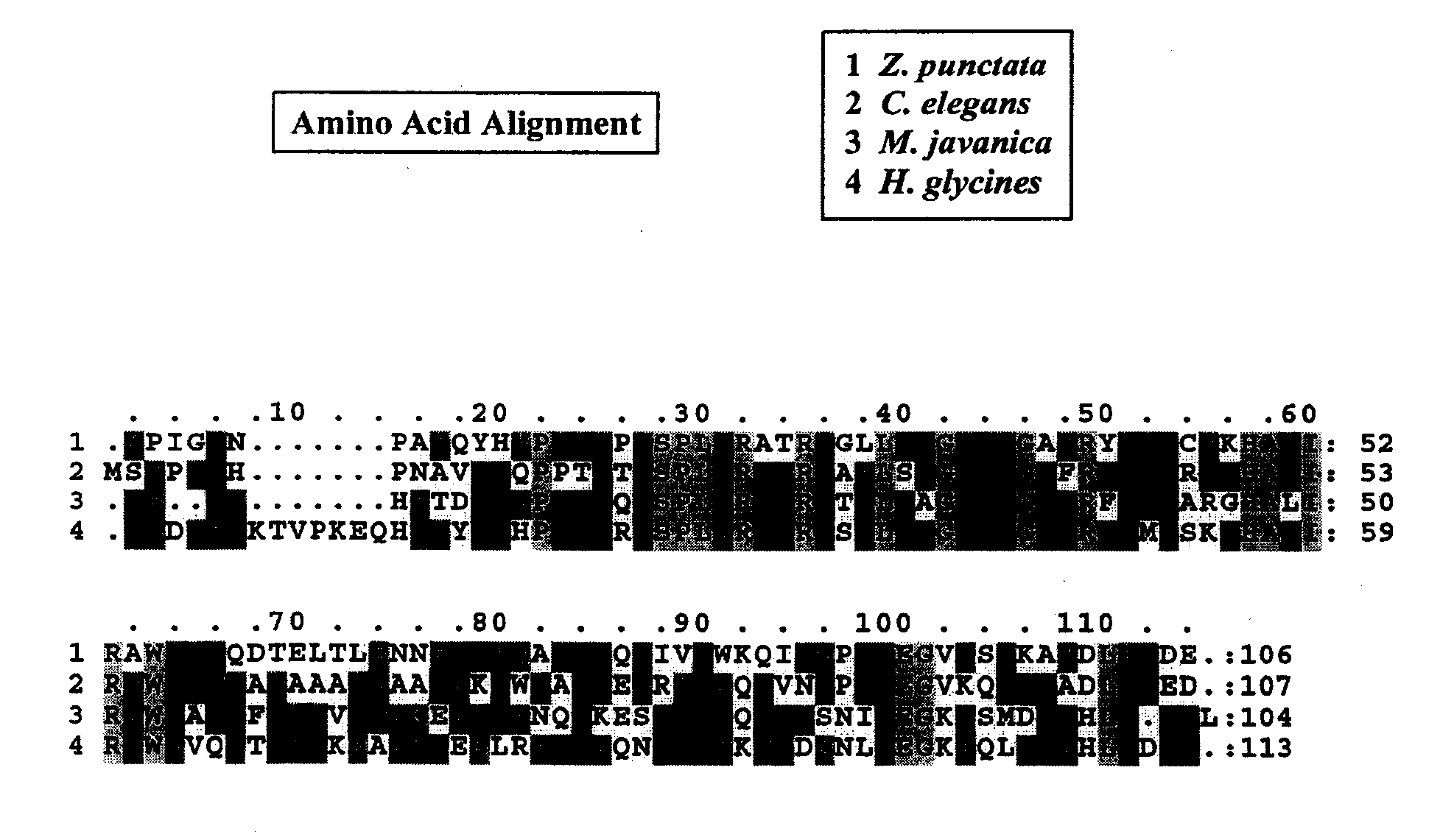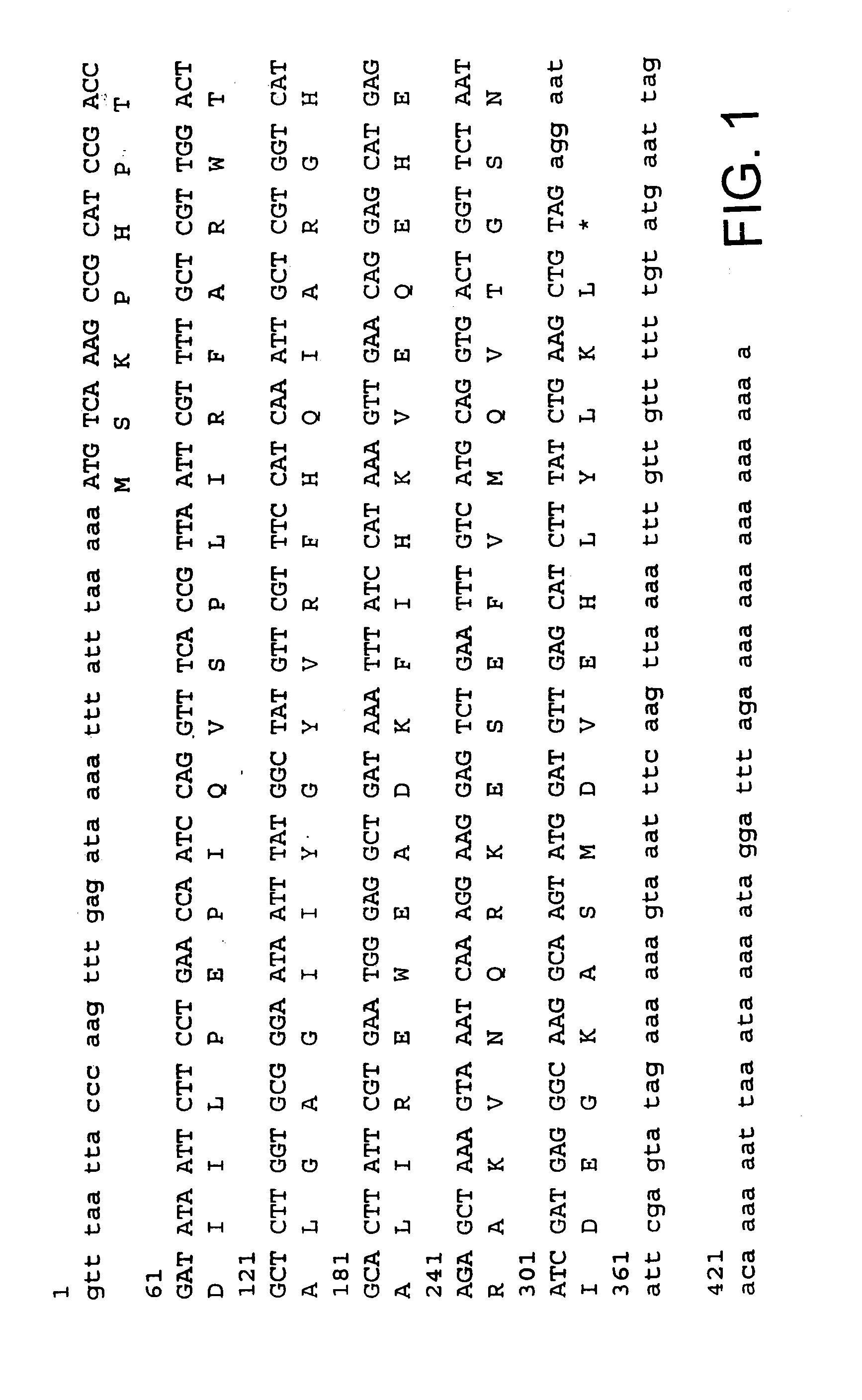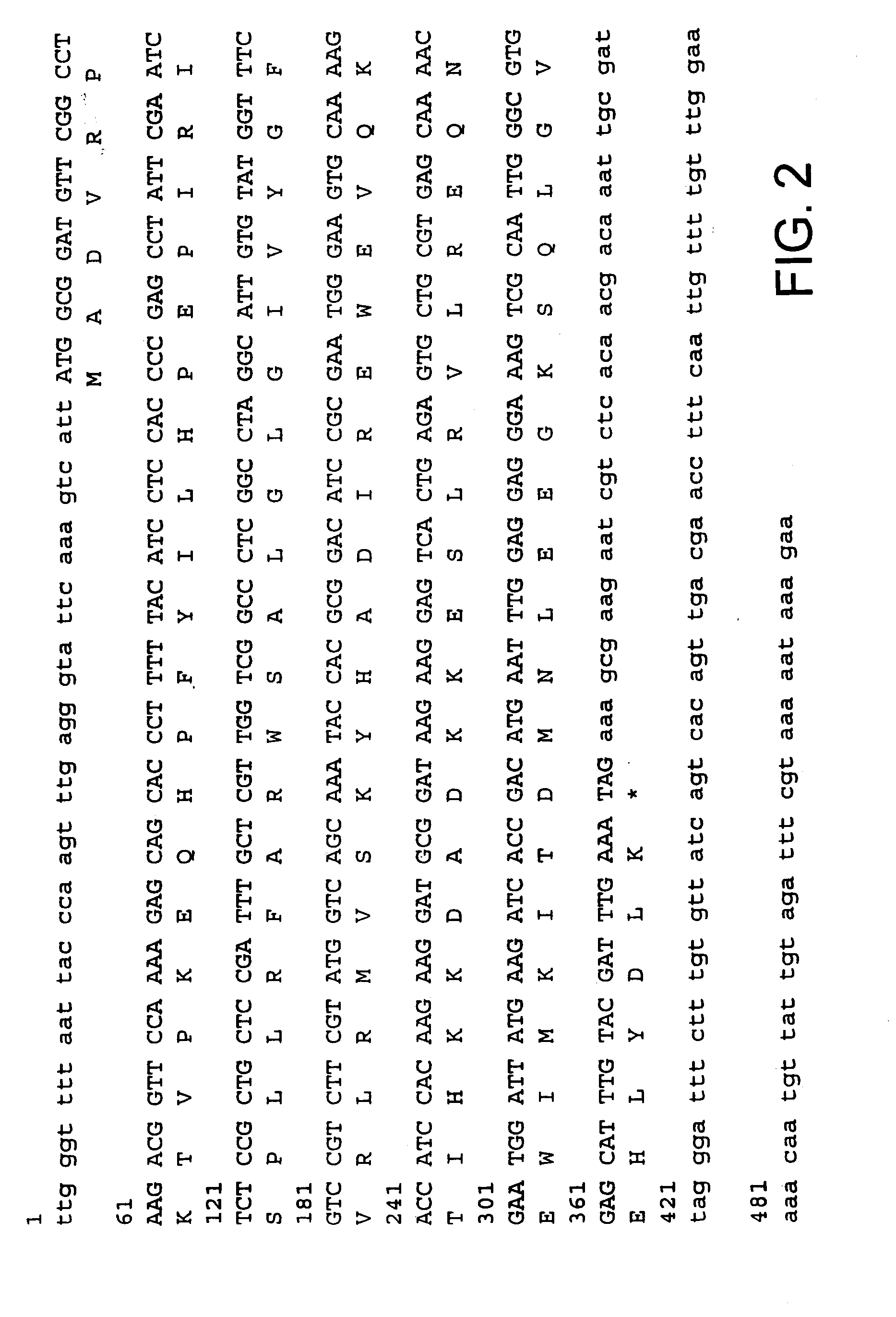Nematode ATP Synthase Subunit E-Like Sequences
a technology of nematode atp and synthase, which is applied in the field of nematode atp synthase subunit e-like sequences, can solve the problems of small array of chemicals available to control nematodes, affecting strawberry and other commodity crop industries, and particularly dire situation for high value crops
- Summary
- Abstract
- Description
- Claims
- Application Information
AI Technical Summary
Benefits of technology
Problems solved by technology
Method used
Image
Examples
examples
[0068]A TBLASTN query with the C. elegans gene T23910 (GenBank® GI: 7506279) identified multiple expressed sequence tags (ESTs are short nucleic acid fragment sequences from single sequencing reads) in dbest that are predicted to encode a portion of ATP synthase subunit E-like enzymes in at least three nematode species: M. javanica (GenBank® GI:9829776) similar to C. elegans codons 12-104; H. glycines (GenBank® GI:10713753) similar to C. elegans codons 6-104; and Z. punctata (GenBanks GI:7710479) similar to C. elegans codons 15-107, all from McCarter, et al. (1999) Washington University Nematode EST Project. Also identified were sequences from Pristionchus pacificus (GenBank® Identification No:5914683) similar to C. elegans codons 6-107; Strongyloides stercoralis (GenBank® GI:10715244) similar to C. elegans codons 1-107; Ancylostoma caninum (GenBank® GI:11180617) similar to C. elegans codons 49-107 (all from McCarter et al. (1999) Washington University Nematode EST Project), Litomos...
PUM
| Property | Measurement | Unit |
|---|---|---|
| apparent dissociation constant | aaaaa | aaaaa |
| apparent dissociation constant | aaaaa | aaaaa |
| apparent dissociation constant | aaaaa | aaaaa |
Abstract
Description
Claims
Application Information
 Login to View More
Login to View More - R&D
- Intellectual Property
- Life Sciences
- Materials
- Tech Scout
- Unparalleled Data Quality
- Higher Quality Content
- 60% Fewer Hallucinations
Browse by: Latest US Patents, China's latest patents, Technical Efficacy Thesaurus, Application Domain, Technology Topic, Popular Technical Reports.
© 2025 PatSnap. All rights reserved.Legal|Privacy policy|Modern Slavery Act Transparency Statement|Sitemap|About US| Contact US: help@patsnap.com



